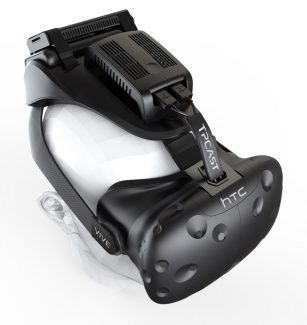Following reveals of TPCast Plus and TPCast for Windows Mixed Reality, the wireless VR specialists TPCast have also announced their “next-generation” technologies, called TPCast 2.0. The company claims their improved system can ‘easily adapt’ to VR headsets as high as 8K resolution, while reducing the latency to 1ms.
Despite HTC’s announcement of an official Vive Wireless Adaptor that supports both Vive and Vive Pro systems, TPCast refuse to have their CES thunder stolen, announcing a “next-generation” wireless VR solution adaptable for “any headset” up to 8K resolution. No launch window or pricing estimates were provided.
According to the press release, TPCast 2.0 employs a “new generation ultra-low latency codec technology and an upgraded TPCast real-time data control protocol.” The new codec is capable of a 50:1 compression ratio, which “significantly reduces the bandwidth required for video data transmission while bounding the latency to 1ms.”

TPCast 2.0 is said to benefit from scalability, “making it easy to adapt to any headset including 3K, 4K, and 8K video resolution,” and has the capability to “preserve the user experience compared to a wired connection.” The statement also claims TPCast’s proprietary technology can deliver a “commercial-grade VR experience.”
“The new TPCast 2.0 announcement is another milestone for TPCast’s innovation,” said TPCast CEO, Michael Liu. “As a leader in the Global Wireless VR space, TPCast is committed to moving the industry forward with its technological advancements. TPCast 2.0 has the highest performance, the broadest scalability, and the most mature product capabilities. (Its) support for a full range of mainstream headsets in various deployment ranges allows TPCast to continue with its vision of unleashing the VR world.”
With the recent announcement of 5G cloud VR rendering technology, combined with the new TPCast 2.0 technologies, the company claims to be the first wireless VR provider to support “short, mid and long range VR demands in multi-user environments,” through the use of WiGig or 802.11ay for short range, Wi-Fi or 802.11ax for mid range, and 5G / 4.5G / FTTH for long distance.







